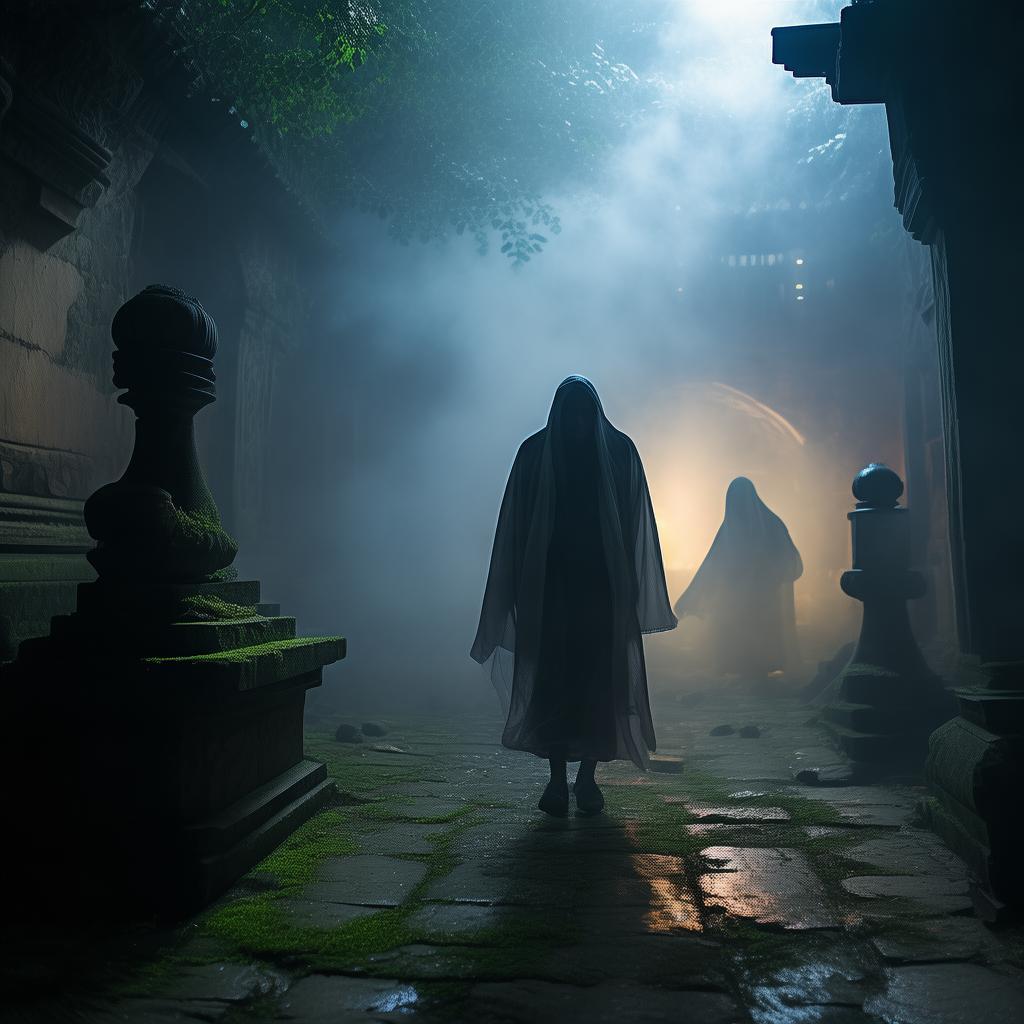The Glass Whisperer: A Lighthearted Haunting Unveiled
In the heart of a picturesque Thai village, nestled among coconut groves and rice paddies, there stood an old, weathered workshop. It was here that the young glassmaker, Natt, toiled away, crafting intricate glass sculptures that were as vibrant as the tropical sunsets that painted the sky each evening. The workshop was a sanctuary of color and light, a place where Natt found solace and a connection to her ancestors.
Natt’s family had been glassmakers for generations, their craft passed down through the bloodline like a secret recipe. But the art of glassmaking was not just about technique; it was a form of storytelling, each piece a fragment of the family’s history. Natt had always felt a peculiar connection to her glass, as if it held the whispers of the past, the laughter of loved ones, and the sorrow of lost memories.
One evening, as Natt was shaping a delicate vase, she noticed a faint, almost imperceptible shimmer. It was as if the glass was alive, breathing with an ancient energy. Curiosity piqued, she placed the vase in the kiln, hoping to see if the shimmer would intensify. When she retrieved it the next day, the vase glowed with an ethereal light, casting strange shadows on the walls.
Word of the glowing vase spread quickly through the village. The villagers, who had always been superstitious, began to whisper about the glassmaker’s newfound powers. Some said it was a sign of good fortune, while others believed it was a harbinger of bad luck. Natt, however, was too absorbed in her work to pay much attention to the rumors.
As the days passed, the shimmering vases began to appear more frequently. Each piece seemed to have a life of its own, as if it were imbued with the essence of someone from the past. Natt felt a strange pull, as if she were being drawn into a world she had never known.
One evening, as she was cleaning her workshop, Natt found an old, leather-bound journal hidden behind a stack of glass molds. The journal was filled with cryptic notes and sketches of glass sculptures that looked strikingly similar to her own work. The entries spoke of a family secret, a haunting that had been passed down through generations.
Intrigued, Natt began to research her family’s history. She discovered that her ancestors had been guardians of a powerful artifact, a glass vase that held the essence of a spirit. The spirit, it seemed, had been a guardian of the village, protecting it from malevolent forces. But with each passing generation, the spirit had grown weaker, and the guardianship had been forgotten.
Determined to uncover the truth, Natt began to create vases that were replicas of the one mentioned in the journal. As she worked, she felt a strange presence in the room, as if someone were watching her. It was a comforting presence, yet at the same time, it filled her with a sense of dread.

One night, as Natt was finishing a particularly intricate vase, she heard a faint whisper. "Thank you," it said, and the room was filled with a warm, golden light. Natt knew then that she had succeeded in reawakening the spirit.
The next day, the village was in an uproar. The vases were said to have strange powers, bringing luck to those who owned them, and protection to the village. Natt’s workshop was flooded with visitors, all eager to own a piece of her unique talent.
But as the fame of her vases grew, so did the number of strange occurrences. People reported seeing ghostly figures wandering the streets at night, and a sense of unease began to settle over the village. Natt realized that she had awakened not just the spirit, but also the haunting that had been dormant for so long.
Determined to put an end to the haunting, Natt began to create a new vase, one that would be a vessel for the spirit to rest. As she worked, she was haunted by dreams of her ancestors, their laughter and sorrow mingling with the sound of glass being molded.
Finally, the vase was complete. It was a simple, elegant piece, devoid of the intricate designs that had become Natt’s signature. As she placed it in the kiln, she felt a sense of peace wash over her. When she retrieved the vase, it glowed with a soft, comforting light.
That night, the villagers reported that the ghostly figures had vanished, and the sense of unease that had gripped the village lifted. Natt realized that she had not just put an end to the haunting, but she had also restored the balance between the living and the dead.
Her workshop, once a place of whispers and shadows, became a sanctuary once more. Natt continued to create her glass sculptures, each piece a testament to her connection with her ancestors and the spirit that had once guarded her village.
And so, the village of glass whisperers thrived, its people living in harmony with the past, the present, and the future.
✨ Original Statement ✨
All articles published on this website (including but not limited to text, images, videos, and other content) are original or authorized for reposting and are protected by relevant laws. Without the explicit written permission of this website, no individual or organization may copy, modify, repost, or use the content for commercial purposes.
If you need to quote or cooperate, please contact this site for authorization. We reserve the right to pursue legal responsibility for any unauthorized use.
Hereby declared.









